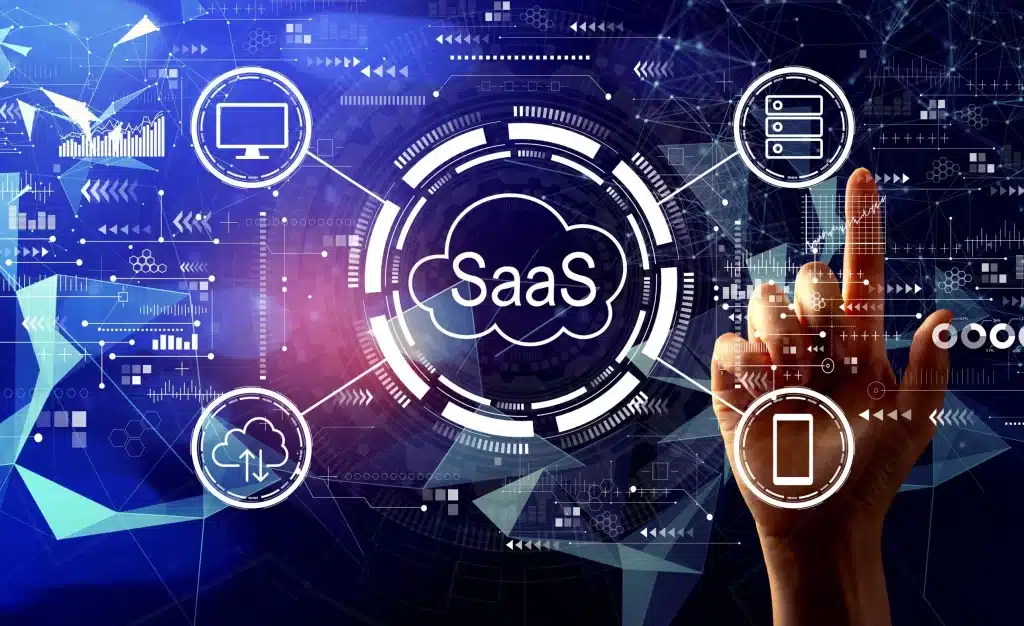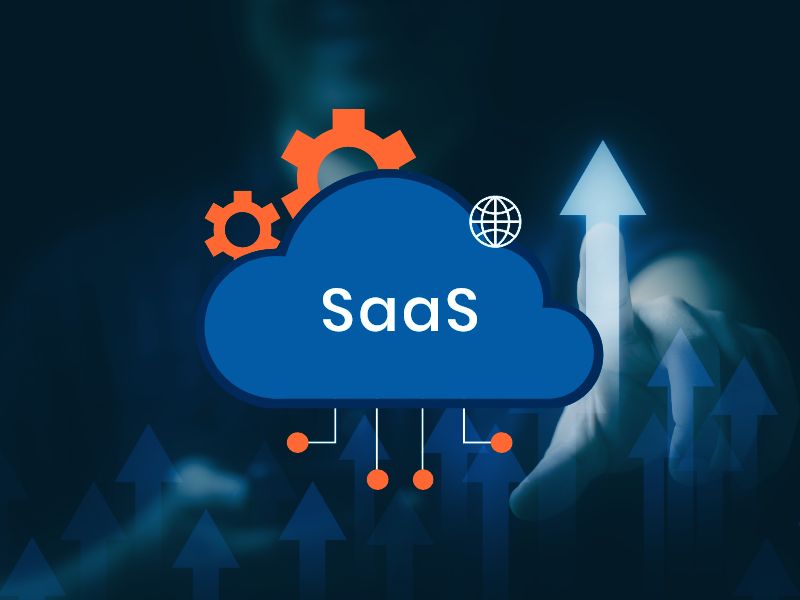Navigating the intricate landscape of scaling a SaaS solution from local success to global prominence is a multifaceted endeavor that demands strategic foresight and meticulous planning. From understanding the nuances of diverse markets to aligning with varying regulatory landscapes, the journey of international expansion poses challenges that require adept navigation. How can SaaS development solutions company effectively tailor their offerings to resonate with a global audience while maintaining a competitive edge in a saturated market? The answer lies in a strategic blend of localization, technological innovation, and a keen understanding of international market dynamics.
Understanding the Global Market for SaaS Solutions
To successfully scale a SaaS solution internationally, market research is essential for understanding the global landscape and identifying potential target markets for the SaaS application development services. By gaining insights into the diverse needs and preferences of different regions, companies can tailor their offerings to meet the specific demands of international customers, ensuring a competitive edge in the global market for SaaS solutions. This proactive approach enables SaaS development companies to strategically position themselves for success in new markets and drive sustainable growth on a global scale.
Market Research for SaaS Global Expansion
Understanding the global market for SaaS solutions begins with a comprehensive analysis of market trends and opportunities. By identifying emerging patterns and potential areas for growth, SaaS companies can strategically position themselves in competitive international landscapes. This initial step is crucial in laying the foundation for a successful global expansion strategy.
Analyzing Market Trends and Opportunities
Exploring the dynamic landscape of global markets provides valuable insights for SaaS companies seeking to expand internationally with precision and foresight. Understanding market trends and opportunities is crucial for a Saas development solutions company looking to tailor their Saas app and enhance Saas experience. By analyzing market data and consumer behavior, companies can fine-tune their Saas development process to meet the diverse demands of a global audience effectively.
Identifying Target Markets for Your SaaS App
Understanding the competitive landscape in global SaaS markets is essential for identifying target markets for your SaaS app. By conducting thorough competitive analysis, you can gain insights into market trends, key players, and potential opportunities for differentiation. This strategic approach enables you to position your SaaS solution effectively and tailor it to meet the specific needs of diverse international customers.
Competitive Analysis in Global SaaS Markets
Conducting a thorough competitive analysis in global SaaS markets is essential for identifying target markets and positioning your SaaS app for international success. Understanding the competitive landscape, pricing strategies, and market trends can provide valuable insights to help refine your SaaS offering and differentiate it from competitors. By leveraging this analysis, you can effectively tailor your marketing approach and enhance your competitive advantage in the global SaaS arena.
| Competitive Landscape | Pricing Strategies | Market Trends |
|---|---|---|
| Identify key competitors and their strengths/weaknesses | Analyze pricing models and adjust for different markets | Stay updated on emerging trends and customer preferences |
Key Strategies for Scaling Your SaaS App Internationally
To successfully scale a SaaS app internationally, it is crucial to focus on building a scalable SaaS architecture that can adapt to varying demands and user volumes across different regions. Additionally, implementing robust security measures in the SaaS development process is essential to safeguard data and maintain trust with users around the globe. These key strategies form the foundation for expanding the reach and impact of a SaaS solution on a global scale.
Building a Scalable SaaS Architecture
To successfully scale a SaaS solution internationally, building a scalable SaaS architecture is paramount. Designing for scalability involves implementing key principles that allow the application to grow seamlessly as user demand increases across different regions. By focusing on a robust and flexible architecture from the outset, SaaS companies can ensure their platform can adapt to varying workloads and user needs globally.
Designing for Scalability: Key Principles
How can a SaaS development company ensure the scalability of its international expansion through the implementation of key principles in building a scalable SaaS architecture?
- Modular Design: Create a modular architecture that allows for easy integration of new features and functionalities.
- Horizontal Scaling: Implement horizontal scaling to distribute the workload across multiple servers to handle increased traffic efficiently.
- Microservices: Utilize a microservices approach to break down the application into smaller, manageable services that can be independently developed, deployed, and scaled.

Implementing Robust Security Measures in SaaS Development
Implementing robust security measures is a critical component of scaling your SaaS app internationally, ensuring the protection of sensitive data and maintaining user trust across diverse markets. By prioritizing security in SaaS development, companies can safeguard against potential cyber threats, data breaches, and compliance issues that may arise when operating on a global scale. Key strategies include adopting encryption protocols, implementing multi-factor authentication, conducting regular security audits, and staying abreast of evolving cybersecurity trends. These measures not only enhance the overall resilience of the SaaS solution but also instill confidence in users regarding the confidentiality and integrity of their information.
| Security Measures | Description | Benefits |
|---|---|---|
| Encryption Protocols | Secure data transmission | Data protection |
| Multi-factor Authentication | Enhanced user authentication | Access control |
| Regular Security Audits | Identify vulnerabilities | Proactive risk management |
Choosing the Right SaaS Development Solutions Company for Global Expansion
Selecting the appropriate SaaS development company is a critical decision when aiming for global expansion. Evaluating key criteria such as expertise, track record, and cultural fit is essential for making an informed choice. Partnering with an experienced SaaS development firm can provide valuable insights and resources to navigate the challenges of international scaling effectively.
Evaluating SaaS Development Companies: Key Criteria
Choosing the right SaaS development company for global expansion demands meticulous evaluation of key criteria to ensure a successful international scaling effort. When assessing potential partners, consider the following essential factors:
- Expertise: Look for a company with a proven track record in developing and scaling SaaS solutions globally.
- Cultural Competence: Ensure the company understands diverse cultural norms to tailor the software for different international markets effectively.
- Compliance: Verify that the company complies with regulatory requirements in various regions to avoid legal issues and maintain trust with customers.
Benefits of Partnering with an Experienced SaaS Development Company
Partnering with an experienced SaaS development company brings invaluable expertise and insights essential for successful global expansion in the competitive software market. These companies offer a wealth of knowledge in developing scalable, secure, and compliant SaaS solutions tailored to diverse international markets. By leveraging their expertise, businesses can accelerate their time-to-market, mitigate risks, and ensure seamless integration with local infrastructures. Additionally, experienced SaaS development partners possess a deep understanding of cultural nuances, regulatory requirements, and industry best practices, enabling companies to navigate global expansion challenges effectively. Collaborating with a seasoned SaaS development firm can be a strategic advantage in achieving sustainable growth and establishing a strong global presence.
| Benefits of Partnering with Experienced SaaS Development Company |
|---|
| 1. Accelerated Time-to-Market |
| 2. Compliance with Local Regulations |
| 3. Enhanced Cultural Adaptation |
Enhancing Your SaaS Experience for a Global Audience
To effectively cater to a global audience, SaaS companies must prioritize user-centric design, ensuring that their software solutions resonate with users worldwide. Adapting SaaS applications to different cultural preferences is crucial for providing a seamless and personalized experience to users from diverse regions. By focusing on enhancing the SaaS experience worldwide, companies can establish a strong international presence and drive user engagement on a global scale.
User-Centric Design: Enhancing SaaS Experience Worldwide
Crafting a seamless user-centric design is paramount in enhancing the SaaS experience for a global audience in today’s interconnected digital landscape. To achieve this, consider the following:
- Intuitive Navigation: Implement user-friendly interfaces with familiar navigation patterns to ensure users from different regions can easily interact with the software.
- Multilingual Support: Offer language options to cater to diverse linguistic preferences, allowing users to engage with the SaaS product in their native language.
- Cultural Sensitivity: Incorporate design elements and visuals that resonate with various cultural backgrounds, fostering a sense of inclusivity and understanding among international users.
Adapting Your SaaS App to Different Cultural Preferences
To cater to diverse cultural preferences and enhance the SaaS experience for a global audience, SaaS development companies must thoroughly assess and adapt their applications to resonate effectively with users worldwide. This adaptation goes beyond just language translation; it involves understanding local customs, expectations, and user behaviors. Elements such as color schemes, imagery, symbols, and even the layout of the interface can significantly impact user engagement in different regions. By incorporating these cultural insights into the design and functionality of the SaaS app, companies can create a more inclusive and user-friendly experience for their international clientele. Ultimately, this attention to cultural preferences not only improves user satisfaction but also strengthens brand loyalty and market penetration on a global scale.

The SaaS Development Process: A Comprehensive Guide
Navigating the SaaS development process demands a meticulous approach to the essential phases and best practices that drive efficiency and innovation. Understanding the intricate steps involved in creating a robust SaaS solution can pave the way for successful international scaling endeavors. By focusing on streamlined development methodologies and strategic implementation, companies can position themselves as agile global players in the competitive SaaS landscape.
Essential Phases of the SaaS Development Process
The SaaS development process encompasses crucial phases such as planning and prototyping, which serve as the foundation for creating a successful software solution. Planning involves outlining the project scope, defining requirements, and establishing a roadmap for development, ensuring alignment with business goals. Prototyping allows for the visualization of key features, user interactions, and overall design early in the development cycle, facilitating feedback incorporation and iterative improvements.
Planning and Prototyping in the SaaS Development Process
Scaling a SaaS solution internationally starts with meticulous planning and prototyping in the development process to ensure a seamless transition to global markets.
- Conduct thorough market research to understand international user needs.
- Create detailed prototypes to test functionality across diverse regions.
- Incorporate feedback loops for iterative improvements before launching globally.
Best Practices for Streamlining SaaS Development
To enhance efficiency and optimize outcomes in SaaS development, implementing best practices is crucial for success in the competitive digital landscape. By following streamlined approaches, SaaS development teams can ensure smooth workflows, faster time-to-market, and high-quality solutions that meet international standards. Below is a table highlighting key best practices for streamlining SaaS development:
| Best Practices | Description |
|---|---|
| Agile Development Methodology | Embrace iterative development cycles for flexibility and adaptability. |
| Continuous Integration and Deployment | Automate testing and deployment processes for efficiency and reliability. |
| Cloud-Native Architecture | Leverage cloud services for scalability, security, and performance. |
Overcoming Challenges in International SaaS Expansion
Expanding a SaaS solution globally poses various challenges, notably legal and compliance considerations that vary across jurisdictions. Additionally, scaling SaaS solutions internationally requires addressing technical hurdles related to infrastructure, data management, and performance optimization. By strategically tackling these obstacles, SaaS companies can pave the way for successful international expansion and cater to a diverse range of users effectively.
Legal and Compliance Considerations for SaaS Globalization
Navigating the intricate legal and compliance landscape is paramount when venturing into international markets with SaaS solutions. To successfully address legal and compliance considerations for SaaS globalization, companies must focus on:
- Data Privacy Regulations: Understanding and adhering to varying data protection laws such as GDPR in Europe, CCPA in the US, or LGPD in Brazil is crucial to ensure the secure handling of user data.
- Intellectual Property Rights: Safeguarding intellectual property through patents, trademarks, and copyrights is essential to protect SaaS solutions from unauthorized use or replication in different jurisdictions.
- Contractual Agreements: Drafting comprehensive contracts that outline service terms, data usage policies, and dispute resolution mechanisms can help mitigate risks and establish clear expectations with international clients.
Addressing Technical Challenges in Scaling SaaS Solutions
Scaling SaaS solutions internationally necessitates a meticulous evaluation of technical challenges to ensure seamless expansion and optimal functionality across diverse markets. One significant technical challenge is data localization requirements, where data must be stored in compliance with specific regulations of each country. This can lead to complexities in managing data across multiple regions efficiently.
Another challenge is ensuring consistent performance and low latency for users worldwide. Implementing content delivery networks (CDNs) and utilizing cloud services strategically can help mitigate these issues. Moreover, adapting to varying internet infrastructures and cybersecurity standards in different regions requires robust network architecture and security protocols. By proactively addressing these technical challenges, SaaS companies can successfully navigate the complexities of international expansion and deliver a reliable service globally.
Leveraging Technology to Scale Your SaaS Solution Globally
In scaling a SaaS solution globally, leveraging technology is paramount. Cloud technology enables seamless international expansion by providing scalable infrastructure and accessibility. Additionally, the strategic utilization of data analytics empowers SaaS companies to make informed decisions, optimize user experiences, and drive sustainable growth.
Cloud Technology and SaaS Global Expansion
Utilizing cutting-edge cloud technology is instrumental in driving the global expansion of SaaS solutions.
- Scalability: Cloud technology enables SaaS companies to effortlessly scale their infrastructure up or down based on demand, ensuring seamless user experiences worldwide.
- Global Accessibility: With cloud-based solutions, SaaS products can be accessed from anywhere with an internet connection, breaking down geographical barriers and reaching a diverse international audience.
- Efficiency and Cost-Effectiveness: Cloud technology optimizes resource utilization, reduces operational costs, and enhances the overall efficiency of SaaS delivery on a global scale, allowing companies to allocate resources strategically and focus on innovation and growth.
The Importance of Data Analytics in SaaS Growth
Leveraging advanced data analytics is paramount for the sustainable growth and global scalability of SaaS solutions in today’s competitive market landscape. Data analytics provide valuable insights into user behavior, preferences, and trends, enabling SaaS companies to make informed decisions that drive innovation and enhance customer satisfaction.
By harnessing the power of data analytics, SaaS businesses can optimize their offerings, personalize user experiences, and adapt to changing market demands swiftly. This data-driven approach not only improves operational efficiency but also enables companies to identify new market opportunities, mitigate risks, and stay ahead of the competition. In a globalized SaaS ecosystem, where agility and precision are key differentiators, data analytics serve as a strategic tool for driving business growth and maximizing the impact of SaaS solutions on a global scale.
The Role of Localization in SaaS Development
Effective localization in SaaS development involves the strategic implementation of multilingual capabilities to cater to diverse global markets. This includes adapting payment and support systems to meet the specific needs and preferences of international users, enhancing user experience and accessibility. By prioritizing localization efforts, SaaS companies can maximize their reach and impact, fostering stronger connections with a broader audience worldwide.
Developing Multilingual Capabilities for SaaS Apps
The incorporation of multilingual capabilities into SaaS applications plays a crucial role in globalizing software solutions and enhancing user experiences across diverse linguistic backgrounds. When developing multilingual capabilities for SaaS apps, consider the following:
- Language Selection: Offer a wide range of language options to cater to the preferences of international users.
- Localization of Content: Translate not only the interface but also the content within the app to ensure a fully immersive experience for users.
- Cultural Adaptation: Understand cultural nuances and adapt the app’s features and design elements to resonate with users from different regions.
Localizing Payment and Support Systems for Global Users
To ensure seamless user experiences and operational efficiency across international markets, localizing payment and support systems in SaaS development is paramount. This localization process involves adapting payment methods to align with regional preferences and integrating multilingual support systems to cater to diverse user needs. By customizing payment options and providing customer support in users’ native languages, SaaS companies can enhance user trust, satisfaction, and overall experience. Moreover, incorporating localized payment gateways and support channels can streamline transactions, resolve issues promptly, and foster stronger relationships with global users. Ultimately, prioritizing the localization of payment and support systems is a strategic approach that can drive the success of SaaS solutions on a global scale.
| Localization Strategies | Payment Systems | Support Systems |
|---|---|---|
| Regional Payment Methods | Multilingual Support | Localized Knowledge Base |
| Currency Conversion | 24/7 Customer Service | Language-Specific Agents |
| Compliance with Regulations | Secure Payment Gateways | Ticketing System Integration |

Comprehensive Software Development Solutions
Unlock the potential of digital transformation with our bespoke software development services, engineered to foster innovation, maximize efficiency, and catalyze business growth.
Conclusion
In conclusion, scaling a SaaS solution internationally requires a strategic approach that takes into account cultural diversity, regulatory frameworks, and market intricacies. By addressing these challenges effectively, businesses can establish a strong global presence and deliver tailored SaaS offerings to a diverse range of users. Leveraging technology and localization are key components in successfully expanding a SaaS solution on a global scale. It is imperative for SaaS development companies to navigate these complexities to thrive in the competitive global market.



